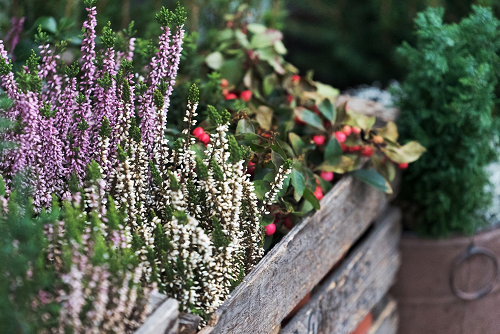A Xeriscape Guide to Cold-Winter Gardening
Xeric plants thrive on any climate and can flourish on extreme temperatures, extra water, dry conditions, low light, or lots of light. Xeriscaping is one of the best ways of planning an economically and ecologically sound garden. Xeriscape winter gardening can be rock-filled, lush, and can also feature different types of fauna.
The Winter Gardening Challenges

Winter temperatures can cause stress to plants. During winter, there are less angled rays and diminished sun exposure. Rainfall is also limited, meaning that regular irrigation may be needed. The soil type, wind exposure, and the slope must be considered before selecting winter gardening plants. Winter is open to elements such as extreme cold and dryness.
The temperatures may also get to the freezing level. Tender plants need to be located to sheltered locations to keep them from the winds and dryness. Be careful to watch out on slopes. These are of particular concern given that they face moisture runs and winds, which could then create dry conditions. The arrival of winter does not mean that your xeriscape garden cannot thrive.
Go Native
Native plants are adapted to the local weather conditions and soil. They do not require much water and can survive in harsh conditions. These plants support bees, birds, and other wildlife by offering shelter and food. Native flora also protects your yard from wildfires.
Hydrozone
Select water-wise plants during winter, and group them wisely. The same way you would cater to beds based on the plants’ particular needs for sunlight should be the same logic used for water usage.
Plants that need lots of water need to be grouped together. The same applies to native perennials. When selecting your plants, look for those that can keep moisture trapped inside for longer. These are plants with thick leaves and fine hairs.
Maintain Proper Drainage
Xeric plants thrive most in rocky environments, meaning they don’t tolerate too much rain. These plants should be planted in soils with organic matter and little clay. They should also be planted on raised mounds for better water drainage. Instead of raking leaves, use them to mulch the ground. This is an organic layer that encourages nutrients to penetrate the ground leading to a lusher yard.
Xeriscaping is an excellent winter gardening that eliminates the need for supplemental water. It varies from natural landscaping due to the emphasis on the selection of plants that conserve water. For all your xeriscape landscape maintenance needs, call us today or contact us online.
Tagged: landscape design, landscaping, xeriscape
Both comments and pings are currently closed.





